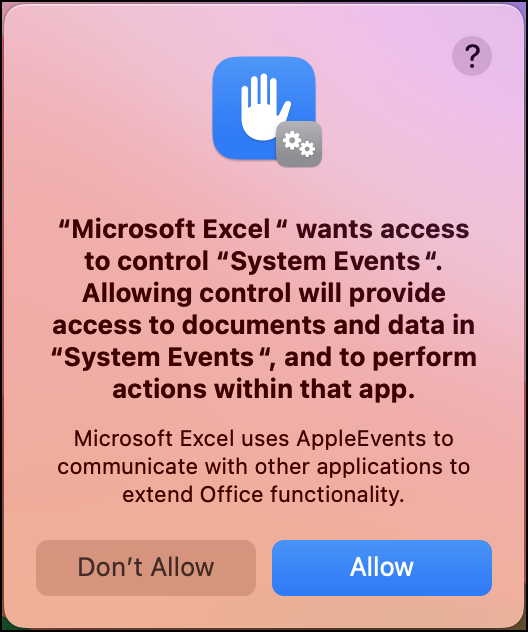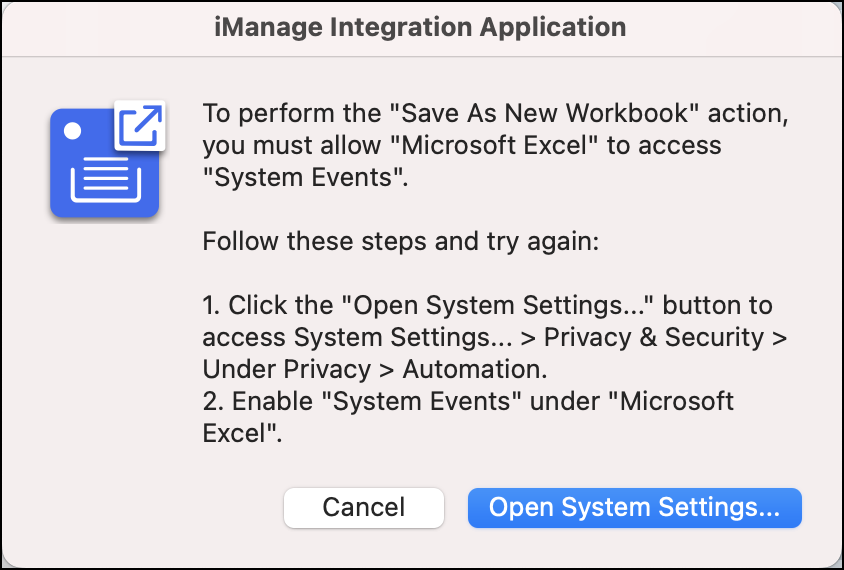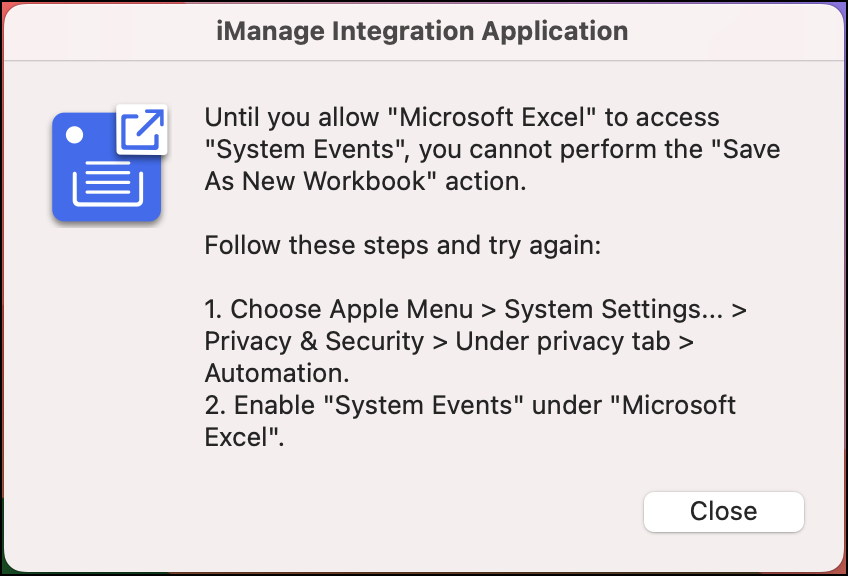macOS Sonoma and macOS Sequoia require users' consent before applications can access certain services from their Macs. When iManage Work Desktop for Mac is deployed on these operating systems, users need to provide permissions for the following actions:
Uninstalling the application.
NOTE: From 10.2.4 onwards, users are not prompted for approval to run the installer. This applies to macOS Sonoma and macOS Sequoia for new installations as well as upgrades to 10.2.4 and later versions.
Accessing the Services menu options in integrated Microsoft and iWork suite applications, Microsoft Outlook and Apple Mail, Finder, and Preview app.
NOTE: The iManage Work options on the Services menu work only if you use the classic Microsoft Outlook view; the options don’t function in new Outlook.
Sending links, documents, or both from iManage Work.
Printing emails from iManage Work.
NOTE: The permissions that a user grants remain enabled even after iManage Work Desktop for Mac is uninstalled. If the user installs again on the same Mac, the application doesn't prompt for the permissions granted during the previous installation and use of the application.
The following example explains the flow of events that occur when a user gives or denies permission to the application.
The user is working with Microsoft Excel and selects Services > Save As New Version Workbook. The following system message is displayed:
Figure: System message about permission for the application
NOTE: This message is displayed only once for each integrated application or action mentioned previously in this section.
The following scenarios are possible based on what the user selects in Step 1:
Allow: Permission is successfully given to Microsoft Excel to access the System Events resource, which is required for the iManage Work Desktop for Mac integration with Excel.
Don't Allow: iManage Work Desktop for Mac displays the following dialog (for the current and all following instances until the user gives the required permissions):
Figure: User consent notification
The following scenarios are possible based on what the user selects in Step 2:
Open System Settings: The user can browse to the check box as instructed, select it to grant the required permission, and perform the action again.
Cancel: iManage Work Desktop for Mac displays another dialog (for the current and all subsequent instances until the user gives the required permissions) with details about how to give the permission manually:
Figure: User consent alertThe user can select Close, browse to System Settings > Privacy & Security and under Privacy, select Automation. The user can then select to expand the Microsoft Excel node and turn on the System Events option.
The user can now save the workbook by selecting Services > Save As New Version Workbook.
Permission for iManage Uninstall application
macOS Sonoma and macOS Sequoia require user consent before the iManage Uninstall application can run in the background. For more information, refer to Uninstalling iManage Work Desktop for Mac.
Turning off permission prompts
You can turn off the aforementioned permission prompts, which macOS Sonoma and macOS Sequoia display, for all users in your organization by pushing the Work Desktop for Mac Alerts.mobileconfig file using a Mobile Device Management (MDM) application.
You can also turn off the permission prompt that is displayed for allowing iManage Work Desktop for Mac notifications in Notification Centre (displayed in the upper-right corner of the screen in macOS Ventura and macOS Sonoma) for all users in your organization by pushing the Work Desktop for Mac Notifications.mobileconfig file using a Mobile Device Management (MDM) application.
NOTE: In iManage Work Desktop for Mac versions earlier than 10.8.0, the Work Desktop for Mac Alerts.mobileconfig and Work Desktop for Mac Notifications.mobileconfig files were named Work for Mac Alerts.mobileconfig and Work for Mac Notifications.mobileconfig.
These files available in the iManage Work Desktop for Mac installation package in the /Library/Application Support/iManage/MDM Payload folder. When deployed, they are added to Profiles (System Settings > Privacy & Security > Profiles) for all Mac users.



